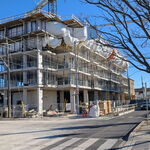The proposed 177 km/h is only marginally faster than than the current 153 km/h speed limit (which was 160 km/h back when we were using tilting trains). And given the meandering alignment of the route via Peterborough, chances are there would be countless curves where trains would have to slow down to below 153 km/h, thereby negating the time savings.
People (and VIA) seem to be downplaying the investment involved with re-activating the route through Peterborough. It's not just a question of laying track, there are numerous areas where track would need to be realigned and/or grade-separated to support any level of decent speed. Once you're building new alignments and grade separations then the cost differential between HSR and conventional rail drops quite a bit.
The question is whether frequency and reliability alone are enough to justify the massive investment required to bring the Havelock sub up to a 177 km/h standard, especially given VIA would need to keep running the existing routing as well in order to serve the intermediate cities.
I also fail to see how building a new line through Peterborough is any more supportive of future upgrading to HSR than the status quo. Either way it's a matter of building a completely new line from scratch. In contrast to the arrow-straight railways in Southwestern Ontario, no part of the Havelock sub has any potential to be upgraded to HSR.
Rather than building 350 km of new conventional track from Toronto to Ottawa via Peterborough, I wonder how the cost would compare if we built 200 km of new high-speed track from Bowmanville to Kingston and double-tracked the existing 160 km/h VIA lines through Smiths Falls and Alexandria. Obviously it would be more expensive, but then at least we'd definitely see substantial time savings.




